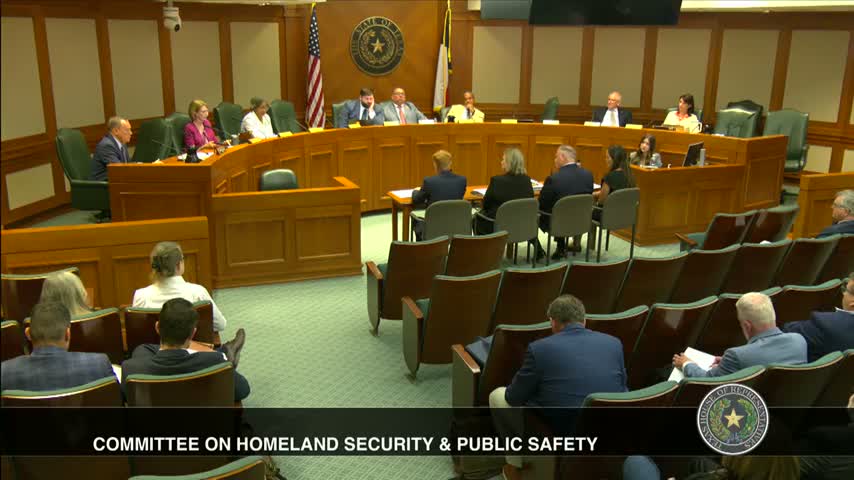Texas leaders push for urgent 911 communication upgrades
August 15, 2024 | Committee on Homeland Security & Public Safety, HOUSE OF REPRESENTATIVES, Legislative, Texas

This article was created by AI summarizing key points discussed. AI makes mistakes, so for full details and context, please refer to the video of the full meeting. Please report any errors so we can fix them. Report an error »

In a recent government meeting focused on enhancing emergency communication systems, key stakeholders discussed the critical need for improved interoperability among various agencies and the challenges posed by outdated infrastructure and funding constraints.
Christy Williams, director of the North Central Texas Emergency Communication District, emphasized the importance of establishing robust communication systems not only for disaster response but also for everyday operations. She highlighted a personal experience where a lack of interoperability led to delays in emergency response during a car accident, underscoring the necessity for seamless data transfer between agencies. Williams pointed out that the implementation of Next Generation 911 could significantly enhance the capabilities of emergency services by integrating advanced technologies, though additional funding will be required for these upgrades.
Captain Edward Cruz from the Kennedy County Sheriff's Office shared his frustrations regarding communication failures in remote areas, where outdated infrastructure has resulted in life-threatening delays in emergency response. He recounted instances where officers were unable to communicate effectively with other agencies due to political barriers and lack of shared frequencies, which he deemed unacceptable in a life-saving context.
Lauren Kirkland, representing Motorola Solutions, discussed the importance of Project 25 (P25) standards for ensuring interoperability among emergency services. She noted that while significant progress has been made in Texas, challenges such as geographic coverage gaps and aging equipment persist. Kirkland advocated for both short-term and long-term goals to enhance communication systems, including providing P25 radios to volunteer fire departments and upgrading existing infrastructure.
The meeting highlighted a collective commitment among various stakeholders to address these challenges and improve emergency communication systems across Texas. The discussions underscored the urgent need for collaboration, funding, and technological advancements to ensure that first responders can effectively serve their communities, particularly in critical situations.
Christy Williams, director of the North Central Texas Emergency Communication District, emphasized the importance of establishing robust communication systems not only for disaster response but also for everyday operations. She highlighted a personal experience where a lack of interoperability led to delays in emergency response during a car accident, underscoring the necessity for seamless data transfer between agencies. Williams pointed out that the implementation of Next Generation 911 could significantly enhance the capabilities of emergency services by integrating advanced technologies, though additional funding will be required for these upgrades.
Captain Edward Cruz from the Kennedy County Sheriff's Office shared his frustrations regarding communication failures in remote areas, where outdated infrastructure has resulted in life-threatening delays in emergency response. He recounted instances where officers were unable to communicate effectively with other agencies due to political barriers and lack of shared frequencies, which he deemed unacceptable in a life-saving context.
Lauren Kirkland, representing Motorola Solutions, discussed the importance of Project 25 (P25) standards for ensuring interoperability among emergency services. She noted that while significant progress has been made in Texas, challenges such as geographic coverage gaps and aging equipment persist. Kirkland advocated for both short-term and long-term goals to enhance communication systems, including providing P25 radios to volunteer fire departments and upgrading existing infrastructure.
The meeting highlighted a collective commitment among various stakeholders to address these challenges and improve emergency communication systems across Texas. The discussions underscored the urgent need for collaboration, funding, and technological advancements to ensure that first responders can effectively serve their communities, particularly in critical situations.
View full meeting
This article is based on a recent meeting—watch the full video and explore the complete transcript for deeper insights into the discussion.
View full meeting
